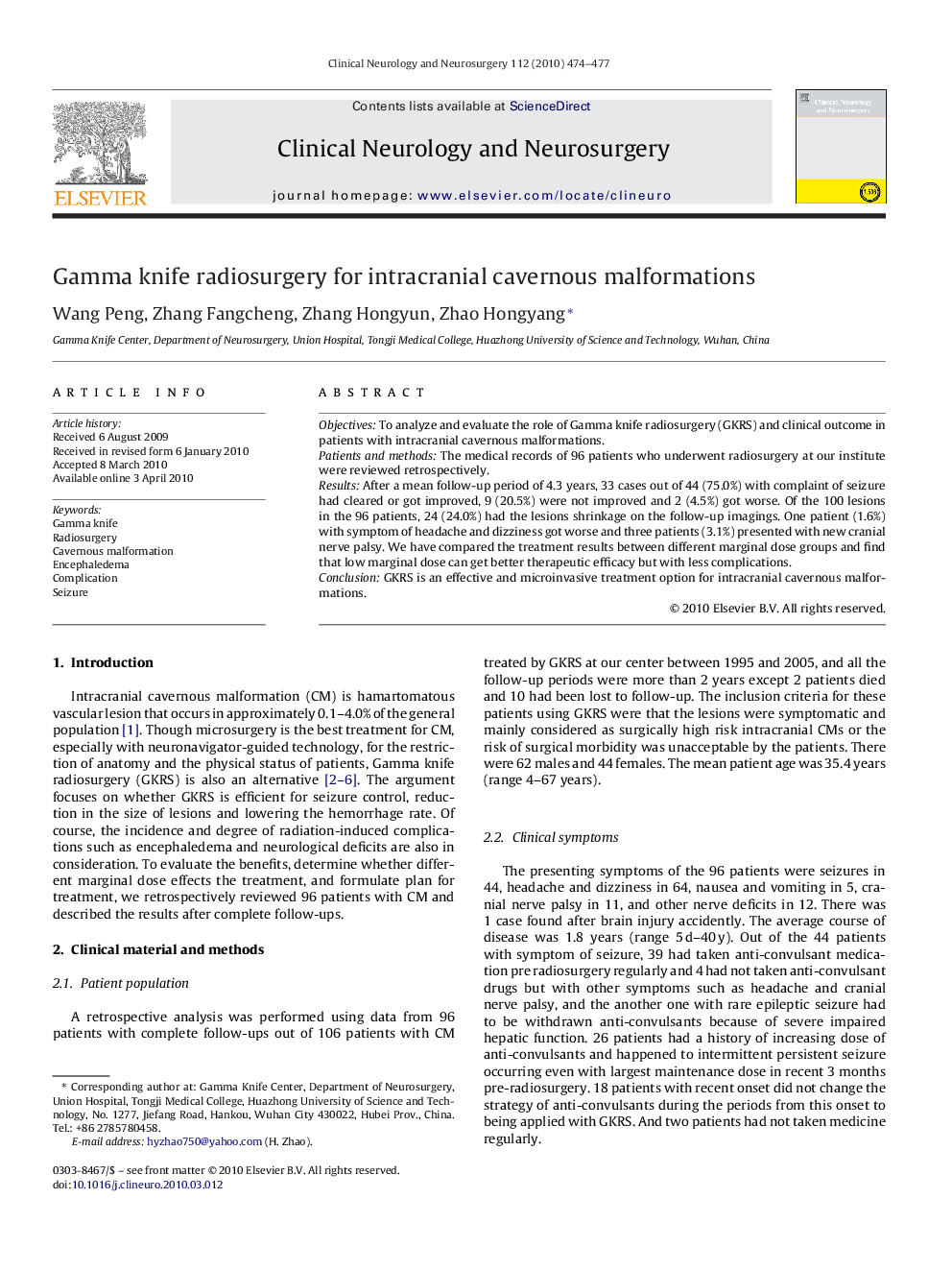| Article ID | Journal | Published Year | Pages | File Type |
|---|---|---|---|---|
| 3041484 | Clinical Neurology and Neurosurgery | 2010 | 4 Pages |
ObjectivesTo analyze and evaluate the role of Gamma knife radiosurgery (GKRS) and clinical outcome in patients with intracranial cavernous malformations.Patients and methodsThe medical records of 96 patients who underwent radiosurgery at our institute were reviewed retrospectively.ResultsAfter a mean follow-up period of 4.3 years, 33 cases out of 44 (75.0%) with complaint of seizure had cleared or got improved, 9 (20.5%) were not improved and 2 (4.5%) got worse. Of the 100 lesions in the 96 patients, 24 (24.0%) had the lesions shrinkage on the follow-up imagings. One patient (1.6%) with symptom of headache and dizziness got worse and three patients (3.1%) presented with new cranial nerve palsy. We have compared the treatment results between different marginal dose groups and find that low marginal dose can get better therapeutic efficacy but with less complications.ConclusionGKRS is an effective and microinvasive treatment option for intracranial cavernous malformations.
